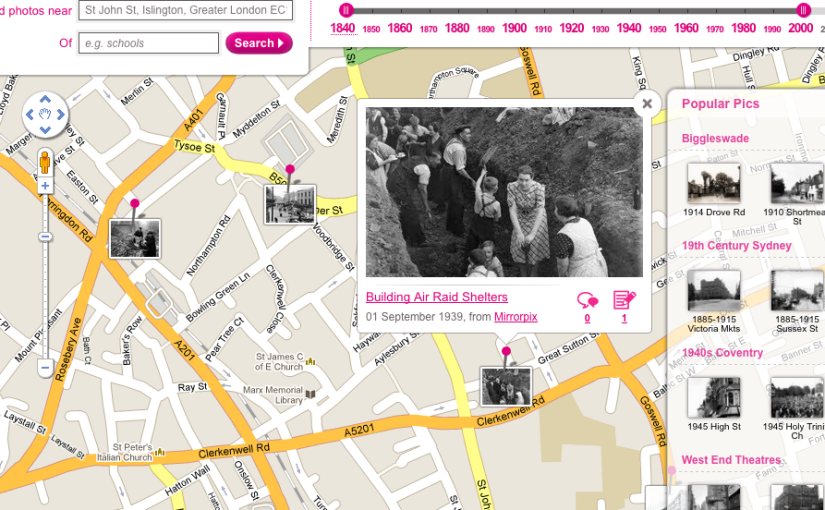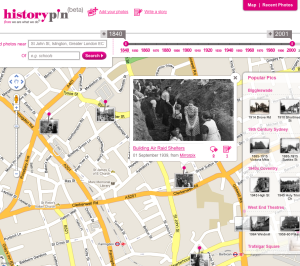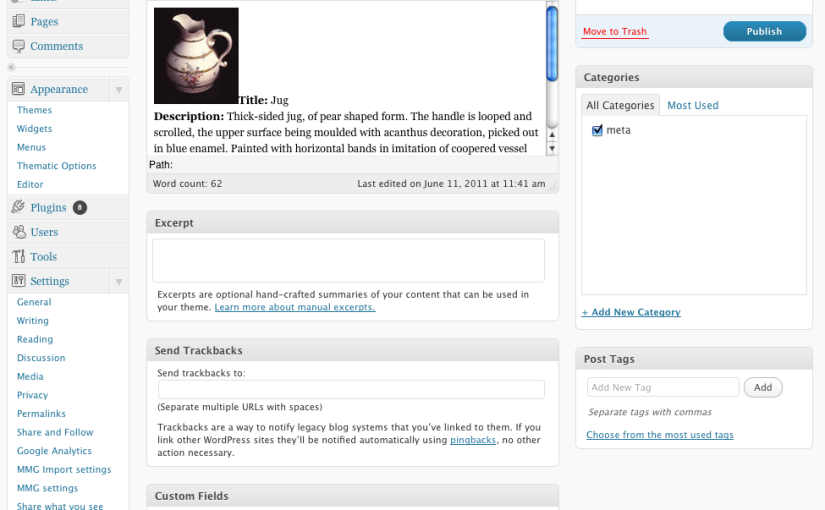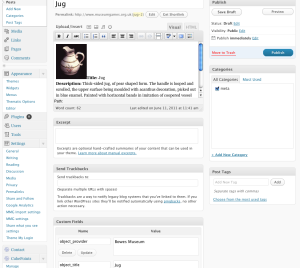I'm blogging several conversations on twitter around the subject of innovation and experimentation that I thought were worth saving, not least because I'm still thinking about their implications.
To start with, Lynda Kelly (@lyndakelly61) quoted @sebchan at the Hot Science conference on climate change and museums:
'Museums want everything to be slick and polished for mass audience, we lose capacity to be experimental and rapid'
which lead me to tweet:
'does big museum obsession with polish hinder innovation? ('innovation' = keeping up with digital world outside)'.
which lead to a really interesting series of conversations. Erin Blasco responded (over several tweets):
We can't pilot if it's not perfect. … Need to pilot 15 quick/dirty QR codes but we can't put ANY up unless there are 50 & perfectly, expensively designed & impressive. … So basically not allowed to fail and learn = not allowed to pilot = we spend a bunch of $ and fail anyway? … To clarify: it's a cross-dept project. One dept ok with post-it notes & golf pencils. Two others are not. Kinda deadlock.
I think this perfectly illustrates the point and it neatly defines the kind of 'polish' that slows things down – the quality of the user experience with the QR codes would rest with the explanatory text, call to action and the content the user finds at the other end, not the weight and texture of the paper or vinyl they're printed on. Suddenly you've got extra rounds of emails and meetings for those extra layers of sign-off, a work request or contract for design time, plus all the stakeholder engagement that you already, but does that extra investment of time and resources result in a better experiment in audience research?
But kudos to Erin for gettings things this far! (An interesting discussion followed with Erin and @artlust about possible solutions, including holding stakeholder evaluations of the prototypes so they could see how the process worked, and 'making the pilot-ness of it a selling point in the design, letting audiences feel they're part of something special', which made me realise that turning challenges into positives is one of my core design techniques.)
Innovation costs, even my plans to try things cheap/free get scuppered by lack of time. For me less about risk more about resources
Which also rings perfectly true – many potential museum innovators were in this position before the museum funding cuts took hold, so innovating your way out of funding-related crises must be even more difficult now.
On the topic of innovation, Lindsey Green said the 'definite reluctance to pilot and fail impacts innovation'. Rachel Coldicutt had just blogged about 'digital innovation in the arts' in Making Things New, pointing out that the question 'privileges the means of delivery over the thing that’s being delivered', and tweeting that 'innovating a system and innovating art aren't the same thing and perhaps there's more impact from innovating the system'.
If the quest is to, as Rachel problematises in her post, 'use digital technologies to remake the Arts Establishment', then (IMO) it's doomed to failure. You can't introduce new technologies and expect that the people and processes within a cultural organisation will magically upgrade themselves to match. More realistically, people will work around any technology that doesn't suit them (for entirely understandable reasons), and even the best user experience design will fail if it doesn't take account of its context of use. If you want to change the behaviour of people in an organisation, change the metrics they work to. Or, as Rachel says, '[r]ather than change for change’s sake, perhaps we should be identifying required outcomes'. Handily, Bridget McKenzie pointed out that 'The Museums for the Future toolkit includes new eval framework (GEOs = Generic Environmental Outcomes)', so there's hope on the horizon.
The caveats: it's not that I'm against polish, and I think high production values really help our audiences value museum content. But – I think investing in a high level of polish is a waste of resources during prototyping or pilot stages, and a focus on high production values is incompatible with rapid prototyping – 'fail faster' becomes impossible. Usability researchers would also say polished prototypes get less useful feedback because people think the design is set (see also debates around the appearance of wireframes).
It's also worth pointing out my 'scare quotes' around the term 'innovation' above – sadly, things that are regarded as amazing innovations in the museum world are often delayed enough that they're regarded as pretty normal, even expected, by our more digitally-savvy audiences. But that's a whole other conversation…
So, what do you think: does a museum's obsession with polish hinder innovation?
Update, January 2013: Rob Stein has written 'Museum Innovation: Risk, Experimentation and New Ideas', which resonated strongly:
A common pitfall for museums is an unhealthy addiction to monumental undertakings. When massive projects loom with ties to outside support and countless staff hours invested in a single deliverable, it becomes very difficult to admit the possibility of failure. As a result, we shy away from risk, mitigate the probability of embarrassment, and crush innovation in the process.



